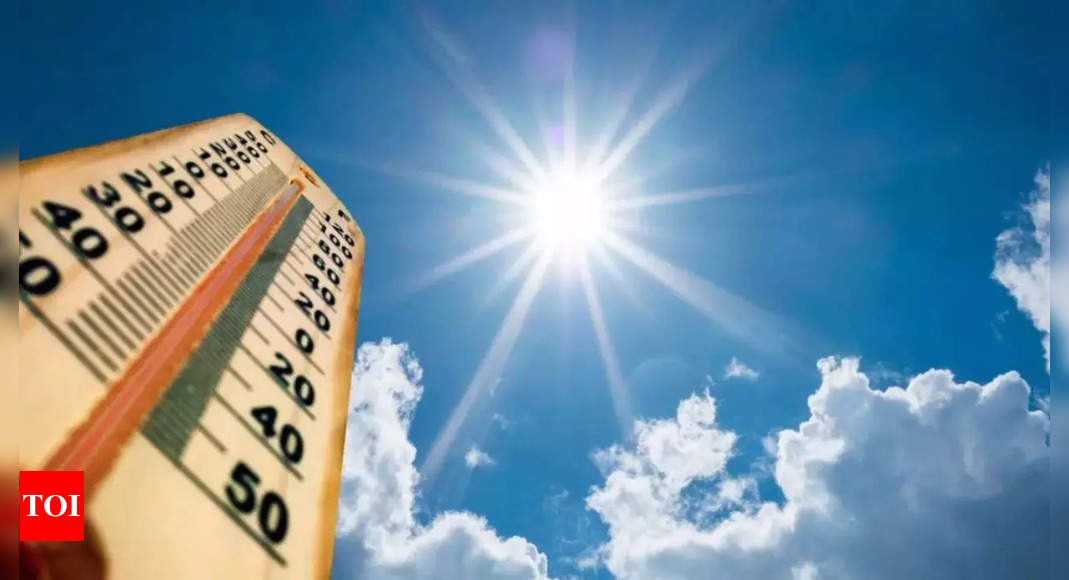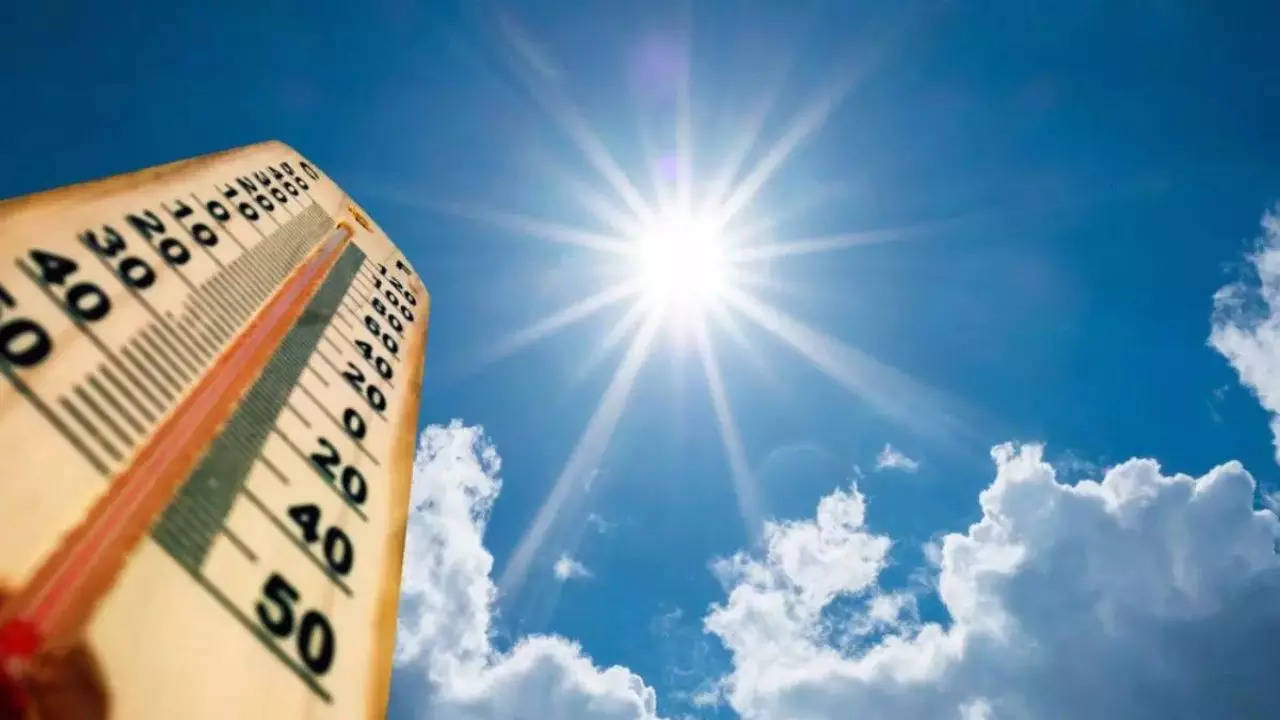[ad_1]
MUMBAI: The IMD has said that during the upcoming hot weather season (April to June), above normal maximum temperatures are likely over most parts of the country, especially with high probability over central India and western peninsular India.
Addressing the Media Dr Mrutyunjay Mohapatra, DG, IMD said “Normal to below normal maximum temperatures are likely over some parts of western Himalayan region, NE states and north Odisha during this hot weather season”.
The other highlights pertaining to temperature scenario during April to June 2024 are given below:
·During the 2024 hot weather season (April to June (AMJ)), above-normal maximum temperatures are likely over most parts of the country, except some parts of east and northeast India and pockets of northwest India where normal to below-normal maximum temperatures are likely.
·During the season (AMJ), normal to above normal minimum temperatures are likely over most parts of the country except for some isolated areas in northeast and northwest India, where normal to below normal minimum temperatures are likely.
·For the month of April 2024, above-normal maximum temperatures are likely over most parts of the country. However, isolated pockets of east, northeast and northwest India are likely to experience normal to below-normal maximum temperatures.
·Above normal monthly minimum temperatures are most likely over most parts of India, except one or two pockets of northwest and northeast India where normal to below-normal minimum temperatures are likely during April 2024.
·During April May June hot weather season, above normal heatwave days are likely to occur over most parts of south peninsula, central India, east India and plains of northwest India.
·During April 2024, above normal heatwave days are likely over many parts of south peninsula and adjoining northwest central India and some parts of east India and plains of northwest India.
·The rainfall during April 2024, averaged over the country as a whole, is most likely to be normal (88-112% of LPA). Normal to above-normal rainfall is likely over most parts of northwest India and many parts of central India, north peninsular India, some parts of east and north east India. Below normal rainfall is likely along east and west coasts, some parts of east and northeast India and west central India.
Addressing the press conference DG, IMD said that a transition from El Niño to ENSO-neutral is expected by April-June 2024 and thereafter, La Niña is favored in June-August,2024.
Talking about the impact of Heat Wave during April to June & April 2024, DG, IMD said during heatwaves elevated temperatures pose significant risks, especially for vulnerable populations like the elderly, children, and those with pre-existing health conditions, who are more susceptible to heat-related illnesses such as heat exhaustion and heatstroke. He said prolonged periods of extreme heat can lead to dehydration, and strain infrastructure such as power grids and transportation systems. He added in order to address these challenges, it is imperative for authorities to take proactive measures like providing access to cooling centers, issuing heat advisories, and implementing strategies to alleviate urban heat island effects in affected areas. Efforts are also needed for safeguarding public health and minimizing the adverse impacts of heatwaves.
He also informed the media that preparedness measures are being taken by NDMA, Ministry of Jal Shakti, Ministry of Agriculture, Ministry of Health and Ministry of Power to mitigate the effects of Heat Wave.
Shri Kamal Kishore, Member and Head, NDMA informed the media that NDMA has taken all measures including holding Annual Workshop with Ministry of Earth Sciences, 23 Heat wave prone States/ UTs, selected districts, and key sectors like Health, Water, Agriculture, Railways, and the civil society. They are also following the best practices of the army. He added that Advisories have been issued to 23 Heat wave prone States/ UTs in March itself and Heat Action plans (HAPs)for these states/UTs are ready. More than 200 cities/districts have prepared local HAPs.NDMA is also running an Awareness Generation campaign using Radio (Helpline FM Rainbow), TV (special episode of Aapda ka Samna, regional DD channels),eVidya DTH TV channels, and social media. Shri Kamal Kishore further informed that in view of the upcoming General Elections 2024, an Advisory has also been issued to the Election Commission to take precautionary measures to guide States and UTs in safeguarding against heat wave incidents.
Short-term preparedness to long-term mitigation taken by NDMA are as follows:
• Comprehensive Mitigation Framework
• NDMA Manual on Cool Roof: technologies to reduce indoor temperature.
• Advanced Meteorological Services and operational forecasts for temperature, wind, humidity, and heat index to inform mitigation strategies.
• Ecosystem and Water Management: green cover, water bodies
• Making Heat Action Plans more dynamic and adaptive.
• Integrating Heat wave Mitigation in Urban Planning: cool roofs, greenery, and water conservation as key facets, changes in building codes and bye laws.
• Technological solutions: Construction technology, monitoring system.
Addressing the press conference DG, IMD said that a transition from El Niño to ENSO-neutral is expected by April-June 2024 and thereafter, La Niña is favored in June-August,2024.
To mitigate the effects of heat wave Shri Kamal Kishore shared that based on NDMA Guidelines, all 23 Heatwave prone States/ UTs have preparedHeat action plans.
Giving insights on current status of agriculture especially with respect to wheat crop, Dr Mohapatra said “1.21 % more area sown than last year and estimated production 112.02 million tonnes which is about 1.46 MT more than last year”. The production of wheat is expected to be around 112-114 million tonnes and heat waves would not have any significant impact on wheat production as 80-85 % wheat has been sown either early or timely between 25th October to 30th November. and 70 % area under climate resilient varieties.
He also informed that M/o Health and family welfare has issued Advisories to State Health Department on Heat Wave season 2024. Ministry of Jal Shakti is also regularly monitoring the storage position of 150 important reservoirs of the country.
Addressing the Media Dr Mrutyunjay Mohapatra, DG, IMD said “Normal to below normal maximum temperatures are likely over some parts of western Himalayan region, NE states and north Odisha during this hot weather season”.
The other highlights pertaining to temperature scenario during April to June 2024 are given below:
·During the 2024 hot weather season (April to June (AMJ)), above-normal maximum temperatures are likely over most parts of the country, except some parts of east and northeast India and pockets of northwest India where normal to below-normal maximum temperatures are likely.
·During the season (AMJ), normal to above normal minimum temperatures are likely over most parts of the country except for some isolated areas in northeast and northwest India, where normal to below normal minimum temperatures are likely.
·For the month of April 2024, above-normal maximum temperatures are likely over most parts of the country. However, isolated pockets of east, northeast and northwest India are likely to experience normal to below-normal maximum temperatures.
·Above normal monthly minimum temperatures are most likely over most parts of India, except one or two pockets of northwest and northeast India where normal to below-normal minimum temperatures are likely during April 2024.
·During April May June hot weather season, above normal heatwave days are likely to occur over most parts of south peninsula, central India, east India and plains of northwest India.
·During April 2024, above normal heatwave days are likely over many parts of south peninsula and adjoining northwest central India and some parts of east India and plains of northwest India.
·The rainfall during April 2024, averaged over the country as a whole, is most likely to be normal (88-112% of LPA). Normal to above-normal rainfall is likely over most parts of northwest India and many parts of central India, north peninsular India, some parts of east and north east India. Below normal rainfall is likely along east and west coasts, some parts of east and northeast India and west central India.
Addressing the press conference DG, IMD said that a transition from El Niño to ENSO-neutral is expected by April-June 2024 and thereafter, La Niña is favored in June-August,2024.
Talking about the impact of Heat Wave during April to June & April 2024, DG, IMD said during heatwaves elevated temperatures pose significant risks, especially for vulnerable populations like the elderly, children, and those with pre-existing health conditions, who are more susceptible to heat-related illnesses such as heat exhaustion and heatstroke. He said prolonged periods of extreme heat can lead to dehydration, and strain infrastructure such as power grids and transportation systems. He added in order to address these challenges, it is imperative for authorities to take proactive measures like providing access to cooling centers, issuing heat advisories, and implementing strategies to alleviate urban heat island effects in affected areas. Efforts are also needed for safeguarding public health and minimizing the adverse impacts of heatwaves.
He also informed the media that preparedness measures are being taken by NDMA, Ministry of Jal Shakti, Ministry of Agriculture, Ministry of Health and Ministry of Power to mitigate the effects of Heat Wave.
Shri Kamal Kishore, Member and Head, NDMA informed the media that NDMA has taken all measures including holding Annual Workshop with Ministry of Earth Sciences, 23 Heat wave prone States/ UTs, selected districts, and key sectors like Health, Water, Agriculture, Railways, and the civil society. They are also following the best practices of the army. He added that Advisories have been issued to 23 Heat wave prone States/ UTs in March itself and Heat Action plans (HAPs)for these states/UTs are ready. More than 200 cities/districts have prepared local HAPs.NDMA is also running an Awareness Generation campaign using Radio (Helpline FM Rainbow), TV (special episode of Aapda ka Samna, regional DD channels),eVidya DTH TV channels, and social media. Shri Kamal Kishore further informed that in view of the upcoming General Elections 2024, an Advisory has also been issued to the Election Commission to take precautionary measures to guide States and UTs in safeguarding against heat wave incidents.
Short-term preparedness to long-term mitigation taken by NDMA are as follows:
• Comprehensive Mitigation Framework
• NDMA Manual on Cool Roof: technologies to reduce indoor temperature.
• Advanced Meteorological Services and operational forecasts for temperature, wind, humidity, and heat index to inform mitigation strategies.
• Ecosystem and Water Management: green cover, water bodies
• Making Heat Action Plans more dynamic and adaptive.
• Integrating Heat wave Mitigation in Urban Planning: cool roofs, greenery, and water conservation as key facets, changes in building codes and bye laws.
• Technological solutions: Construction technology, monitoring system.
Addressing the press conference DG, IMD said that a transition from El Niño to ENSO-neutral is expected by April-June 2024 and thereafter, La Niña is favored in June-August,2024.
To mitigate the effects of heat wave Shri Kamal Kishore shared that based on NDMA Guidelines, all 23 Heatwave prone States/ UTs have preparedHeat action plans.
Giving insights on current status of agriculture especially with respect to wheat crop, Dr Mohapatra said “1.21 % more area sown than last year and estimated production 112.02 million tonnes which is about 1.46 MT more than last year”. The production of wheat is expected to be around 112-114 million tonnes and heat waves would not have any significant impact on wheat production as 80-85 % wheat has been sown either early or timely between 25th October to 30th November. and 70 % area under climate resilient varieties.
He also informed that M/o Health and family welfare has issued Advisories to State Health Department on Heat Wave season 2024. Ministry of Jal Shakti is also regularly monitoring the storage position of 150 important reservoirs of the country.
[ad_2]
Source link


